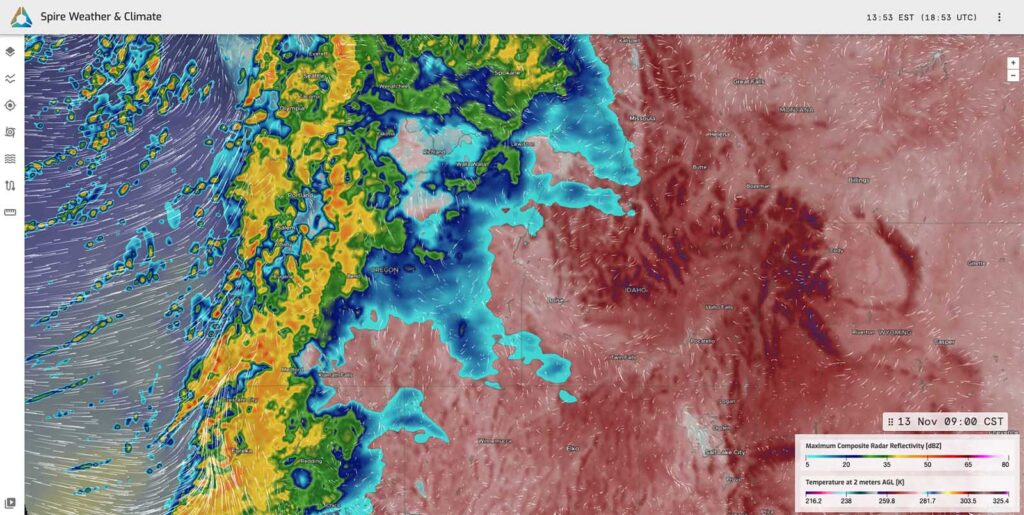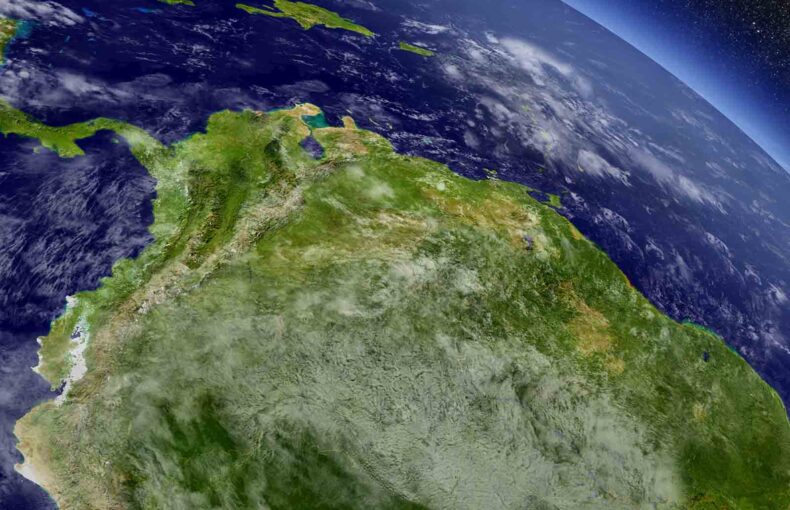What is data assimilation and why does it matter in weather modeling?
In today’s data-driven world, precise weather predictions are not just helpful – they’re essential.
From anticipating severe storms to optimizing energy trading strategies and logistics, accurate forecasts have a powerful impact across sectors.
Introduction to data assimilation
Behind these predictions lies weather modeling, a sophisticated process powered by data assimilation, which integrates vast amounts of observational data into computer models to improve forecast accuracy.
This article examines the critical role of data assimilation in numerical weather prediction, showing how it enhances forecast accuracy to meet the needs of industries like utilities, logistics, energy trading, and insurance.
Exploring data assimilation’s role in weather modeling
Weather modeling is complex, using mathematical equations to simulate atmospheric behavior by analyzing variables like temperature, pressure, and humidity across different elevations and regions. However, to transform these simulations into actionable forecasts, they must be anchored in real-world data. Data assimilation bridges this gap, merging diverse observational data sources—such as satellites, radar, ground-based instruments, and previous forecasts—into weather models. This integration provides a snapshot of the best possible estimate of current atmospheric conditions, setting a foundation for reliable forecasts.
For those in high-stakes industries, the difference between an accurate or inaccurate forecast can mean millions in losses or gains. Here’s how data assimilation works to elevate forecast accuracy for informed business decision-making.

A snapshot of the Spire High-Resolution Forecast depicting radar reflectivity, 2-meter temperatures, and 10-meter winds as viewed in Cirrus, a Spire data visualization solution.
Key benefits of data assimilation
- Enhanced forecast accuracy
The primary goal of data assimilation is to refine forecast models by incorporating real-time observations. By adjusting initial conditions in models with current data, meteorologists can significantly improve forecast accuracy, supporting timely, data-driven decisions across sectors that rely on precise weather predictions. - Error correction and bias reduction
Models are not immune to error, and data assimilation corrects these errors by dynamically adjusting model parameters based on observed data. For businesses, this means access to more reliable forecasts that minimize risk by accounting for known model biases. - Seamless integration of diverse data sources
Effective data assimilation techniques manage vast, varied datasets collected from multiple sources, formats, and time intervals. This adaptability ensures that weather models remain resilient and robust, equipped to integrate data from an expanding array of high-tech observational tools. At Spire, for example, we utilize a hybrid method that blends ensemble approaches—statistical solutions—with deterministic forecasts to maximize accuracy and adaptability. - Deeper understanding of atmospheric dynamics
Integrating observational data not only improves forecast quality but also enhances meteorologists’ understanding of atmospheric processes. This knowledge is key to advancing weather science, leading to models that are better equipped to handle complex phenomena relevant to industries like insurance, where the stakes are high when assessing climate risk. - Short – and long-term forecasting accuracy
Data assimilation is essential for both immediate and extended forecasts, improving accuracy from daily weather reports to seasonal and extreme-event predictions. For logistics and energy sectors, this means better alignment of resources and optimized strategies in response to upcoming weather patterns.
Data assimilation vs. data science: Clearing up the confusion
Data assimilation is sometimes mistaken for data science, but they serve different purposes. Data science typically involves analyzing historical data to uncover trends, while data assimilation is a mathematical process focused on integrating real-time observations into predictive models. In weather forecasting, data assimilation combines information from satellites, ground stations, radar, and ocean observations to form an accurate “initial state” of the atmosphere. This accurate starting point is essential because it determines the trajectory of future forecasts.

Spire’s approach to data assimilation
At Spire Weather & Climate, our commitment to high-resolution weather forecasting is bolstered by innovative data assimilation techniques. We use a hybrid approach that merges ensemble and deterministic methods, ensuring our forecasts are robust and adaptable. Quality control (QC) processes further refine our data inputs, enhancing the reliability of real-time weather insights that our clients depend on.
As Spire Data Assimilation Expert Sanita Vetra-Carvalho explains, “As long as you can model it and observe it, you can apply an appropriate data assimilation technique. These techniques vary depending on the type of data you have, the model you’re using, and what outcome you’re aiming for.”
“The critical piece is setting the initial condition and keeping the system on track, especially because weather is such a chaotic system,” Vetra-Carvalho continued. “For instance, in the ionosphere, you still need to know the initial condition, but it’s not as chaotic. There, it’s more about correcting the drivers that influence the outcome, rather than managing chaos.”
“Similarly, in flood forecasting, it’s less about correcting model chaos and more about adjusting for biases or inflow errors. So, there’s a range of different techniques depending on the system you’re working with,” she added.
Spire’s approach to data assimilation supports clients across various industries, providing forecasts that account for the unique dynamics of each system.
Conclusion
Data assimilation stands as a cornerstone of weather modeling, enabling highly accurate and reliable forecasts for industries where timing and precision are everything. As observational technologies advance, data assimilation will continue to enhance the ability to predict and respond to weather events. For businesses in sectors like utilities, logistics, energy trading, and insurance, the benefits of precise weather forecasting are clear: optimized decision-making, reduced risk, and competitive advantage.
Incorporating data assimilation into weather modeling allows us to respond more effectively to a changing climate and the growing demand for timely, accurate weather forecasts. By setting a strong foundation with a well-defined “initial state,” data assimilation not only supports today’s forecasting needs but also strengthens our ability to navigate the uncertainties of tomorrow.
Learn more about Spire’s High-Resolution Forecast
Reference
Evensen, G., Vossepoel, F., & Van Leeuwen, P. J. (2022). Data Assimilation Fundamentals: A Unified Formulation of the State and Parameter Estimation Problem. 10.1007/978-3-030-96709-3
 Written by
Written by


